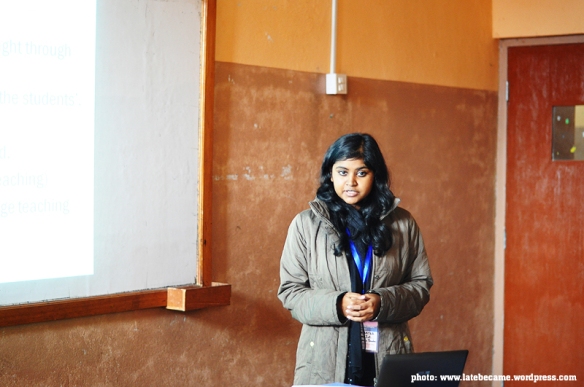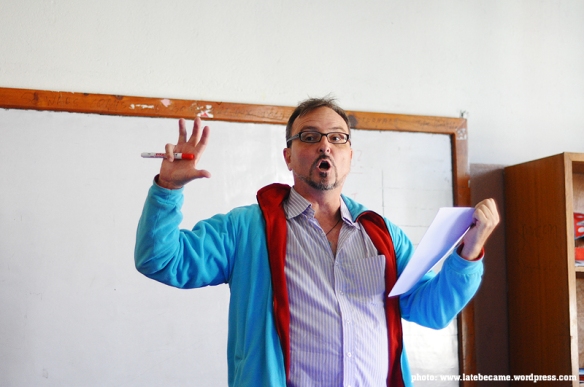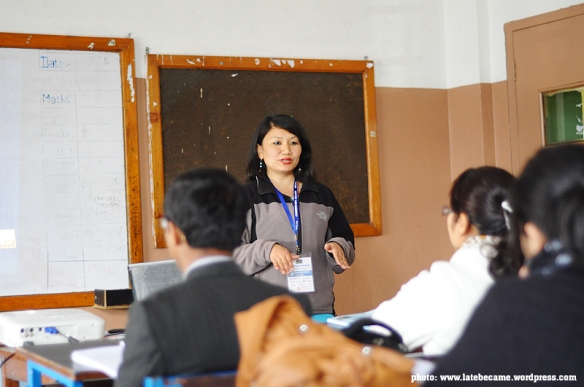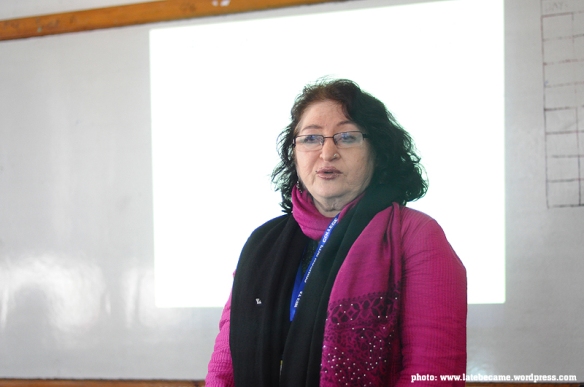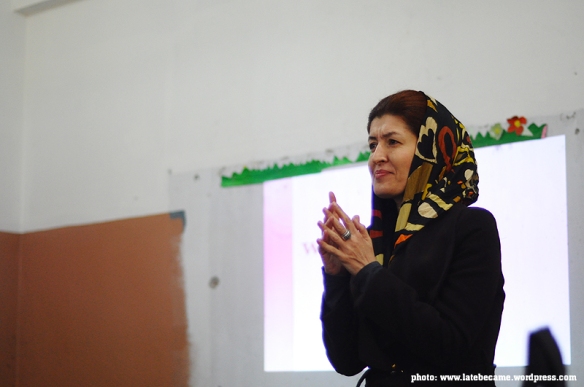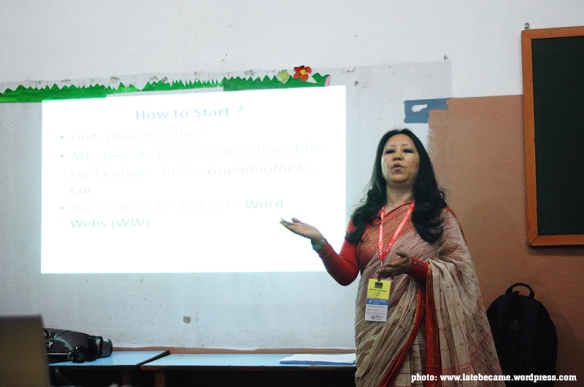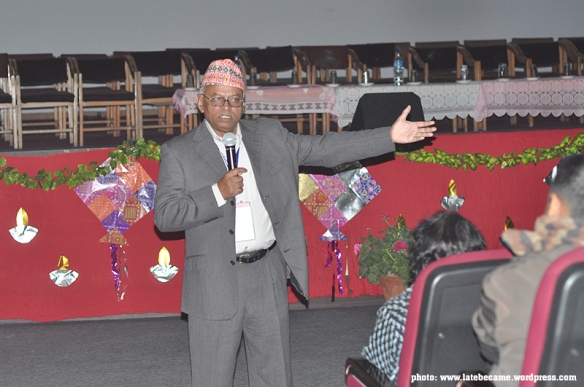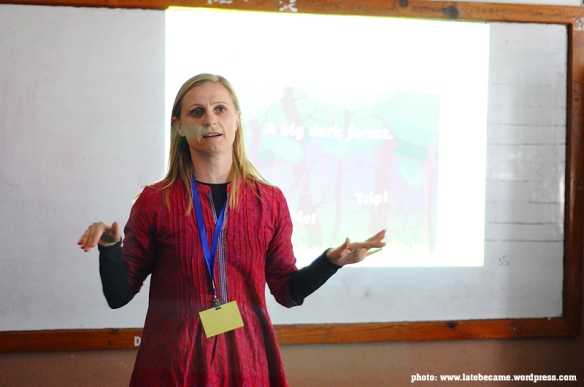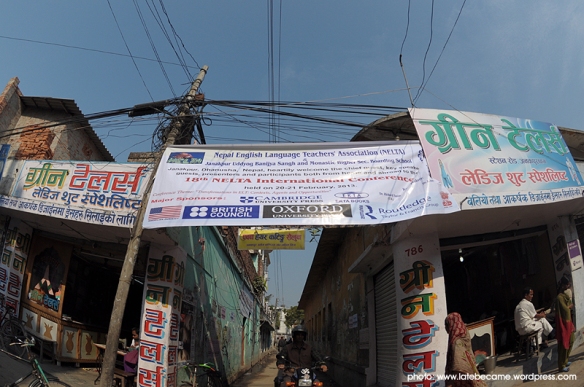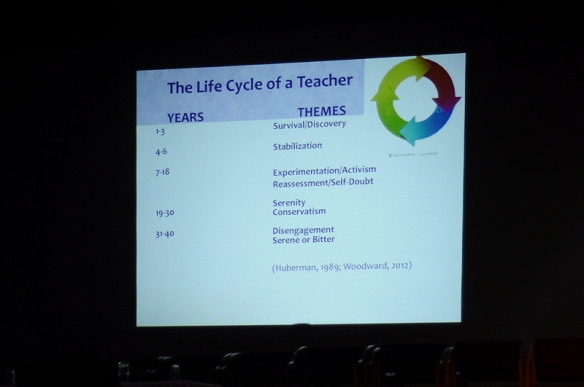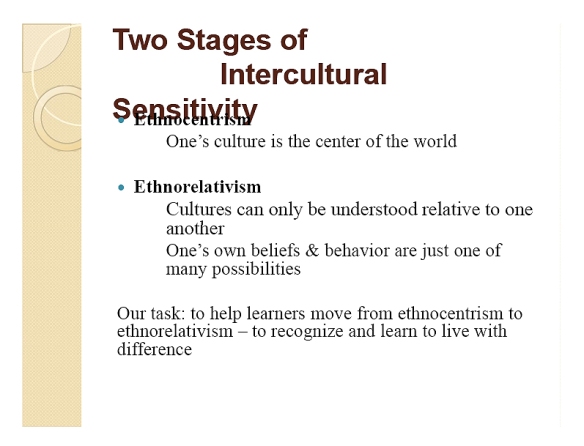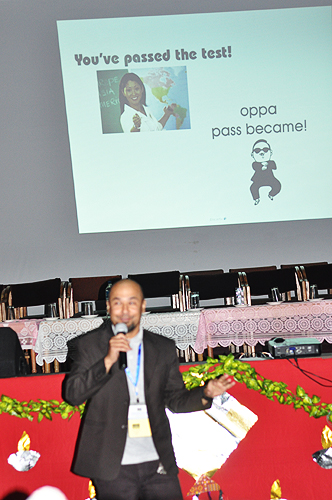Easier said than done but if worse comes to worst, just hang in there!
(Published on Nelta Choutari, December 2013 Issue)
Umes Shrestha
www.latebecame.wordpress.com
Lecturer, blogger and a podcaster
Right at the outset, let me state that I am taking a very controversial stance here. Because many supporters of World Englishes believe that for second language learners of English, gaining native like competence of English is a myth. It’s not possible, and, in essence, it’s not necessary. Let’s face it, they also tell you that the ‘coded-down’ version of English (or the English as Lingua Franca) is the only way forward because English will eventually lose its standard-ness.
Fine by me but here’s my stance. If a learner wants to speak (or write) English better, he/she has to try and learn how the native speakers of English use the language in real life context. In addition to acquiring the sense of vocabulary, structure, forms and semantics, the learner also has to develop the pragmatic fluency in English. (I am not talking about American accent or British accent or any such accent, though.) Therefore, I strongly believe that only by learning and acquiring unique characteristics and nuances of English language will the learners become more competent and proficient in it.
Some of the areas of such nuances in a language are the use of figurative expressions (idiomatic expressions, phrases, proverbs, etc). Similar to our own Nepali language, English language is also very rich in such figurative expressions. Using these expressions (let’s say: idioms) add color and imagination in speech and in writing. This obviously holds true for all the language. Nepali language would most certainly be pretty bland if it didn’t have any figurative expressions. So, by mastering the use of English idioms, one’s English can become more natural and less awkward, more articulated and less dull. Learners and users of English will be able to produce and interact in English at a different creative level.
Normally, we don’t find any trace of this concept in standard textbooks because the curriculum and syllabus are usually ‘water-downed’ for general learners of English. Just flip through Our English books for Class 9 and 10. Why there’s no focus on this aspect of English is quite beyond me. English magazines, newspapers, stories, TV shows, movies are however full of figurative expressions. Imagine the shock and dismay when learners discover the real English used in real contexts, when they find that the English in real life can be quite different than the English in textbooks. Hence there are always chances that students and learners know English language but do not know how to use and understand English language competently and fluently.
And even when students use or try to understand the meaning of idioms, they try to translate them word-for-word at a very literal level. But translating the idioms into one’s mother tongue will only compound the problem. Figurative expressions are unique properties of a language and when translated into another language, they usually lose their true essence and purpose.
For instance, let’s consider the sentence with a very common idiom:
Sentence 1: He insulted me and I lost my temper.
In Nepali the literal meaning of ‘to lose’ is ‘haraaunu’.
Sentence 2: I lost my money. (maile paisa haraaye)
Sentence 3: I lost my book yesterday. (maile hijo kitab haraaye)
These two sentences 2 and 3 make sense even when translated into Nepali. But. If a Nepali learner of English translates the Sentence 1 in the similar vein, he/she will only come up with confused and even nonsensical meaning. This is the reason why the figurative expressions are difficult to learn, acquire and eventually master.
Similarly, the following sentences can be difficult for Nepali learners to understand and to use in their real contexts because, again, translation doesn’t help.
Sentence 4: I can’t stand Science class because it is way over my head.
Sentence 5: You don’t stand a chance of getting good score in Science because it is
way over your head.
And, here are some real instances from my classroom.
Me: Alright students, let’s wrap up today’s lesson.
Student: (with a confused face) Sir, wrap ta gift lai garne hoina?
Sir, we only wrap gifts, don’t we?
Me: Guys and girls, keep it down.
Student: What to keep down?
Thus, unless a learner ‘develops a knack’ for figurative expressions through practice and enough exposure, it will be difficult for him/her to develop English language competency.
Moreover, using figurative expressions adds ‘fun’ to the English language. It’s thrilling and it’s entertaining. Many a times, it’s defamiliarizing. (Here’s the buzzword!). And it goes without saying that ‘enjoying the language’ is one of the most essential requirements to learning and acquiring a second language. We can also call this fun element an ‘intrinsic motivation’ or ‘internal drive’ to get better and to prosper in the language one is learning.
So, I request my fellow English language teachers to incorporate figurative expressions in their teaching as per their discretion. We all know… we will have to put in a little extra effort because it may not be in the textbooks. But don’t give it a second thought. Implement it. You’ll enjoy it. The students will enjoy it.
I hope you will just give it a shot!
Great!
—
Some links:
Devil’s Advocate vs Vicki Hollett on ELF
http://chiasuanchong.com/2012/03/04/devils-advocate-vs-vicki-hollett-on-elf/
Chia Suan Chong speaks about English as a Lingua Franca
http://www.youtube.com/watch?v=oB6traNccQQ


